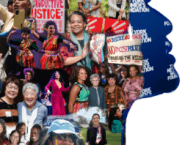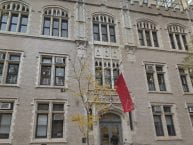We left school at around 11:30 right after lunch. I was a little apprehensive, our fieldwork was not as prepared as I thought it should be. As soon as we had finally got every parent’s permission and we had finally gotten out the door, I suddenly realized we had no adult with us and didn’t have very clear directions. But thankfully, we had the metro touch screen maps to help us find the right train. We finally made it off the subway and I asked a policeman for directions and we got to the big building 100. The building was large, with people bustling in and out, not caring at all about three 8th graders. After we got our visitors pass we headed up to her office.
We met Hilary Meltzer on the sixth floor and she greeted us with a warm welcome. Ms. Meltzer is the Deputy chief old environmental law division and she handles environmental and land use issues. SHe was a very helpful person and I learned a lot. For instance did you know that there are several kinds of pollution that is directly related to water? There is illegal dumping of unknown substances, organic waste and all the bacteria and other trash and dirt that gets washed down into the gutters and when there is a rain storm, the water treatment plants get overwhelmed and that polluted water gets into cleaned waterways. When the rain falls, it washes down all the dirt out onto the street where all the streets and litter get picked up and All the trash and litter gets washed into the treatment plants. The treatment plants can only have enough water, if there is a long rainstorm, the water begins to overflow and the polluted water goes into clean waterways. One of the most effective ways to help water pollution.
I also learned more about the history of New York’s water. All the water was clean and all fresh water was drinkable. But when the europeans came in and began to settle and move trees and make cities, causing animals to be pushed out of their natural habitats. Some species of fish were simply fished out and others, as well as the Native Americans were susceptible to the diseases the settlers brought over from Europe. Turbidity was also a big problem. All the construction contaminated the water, not making it safe for humans to drink or animals to live in. There became a lack of clean water which in turn, made it impossible to put out fires. But then, the settlers found a way to tap into the fresh water upstate and that is still where most of our tap water comes from.
Although she did not know much on my topic, she did give us some great leads. For one thing, she mentioned the book called Cod: A Biography of the Fish that Changed the World, by Mark Kurlansky. Another book Meltzer suggested was On the Water: Palisade Bay, by Guy Nordenson, Catherine Seavitt, and Adam Yarinsky. These books are about the history of Manhattan’s marine wildlife. Before the European settlers came, there was a larger amount of wildlife and vegetation but now most of it is gone, due to overfishing and pollution. Hilary told us all about the depletion of wildlife and the years of pollution and over hunting and fishing. Our conversation gave me an idea for a project that I could do. I could make a poster showing the kinds of fish and animals that were in Manhattan before the settlers came and over the years, what species have migrated died out or was over hunted. Maybe people will realize that at the rate we are going our oceans and fish populations and other aquatic animals are doomed. People are going overfish and overhunt to the point of extinction and as a result of that, other animals will begin to die out because they have lost their food source and the delicate food chain will unravel.





